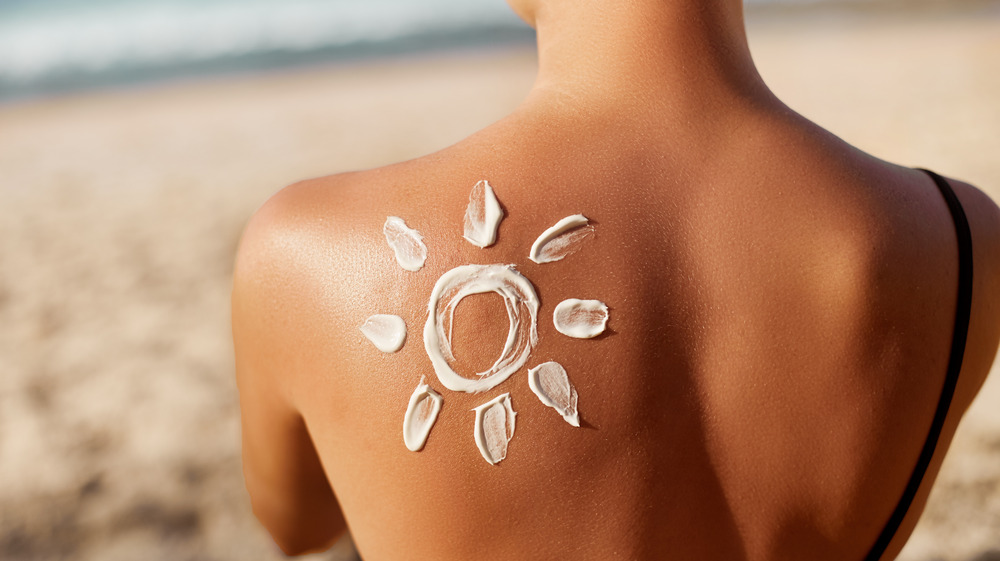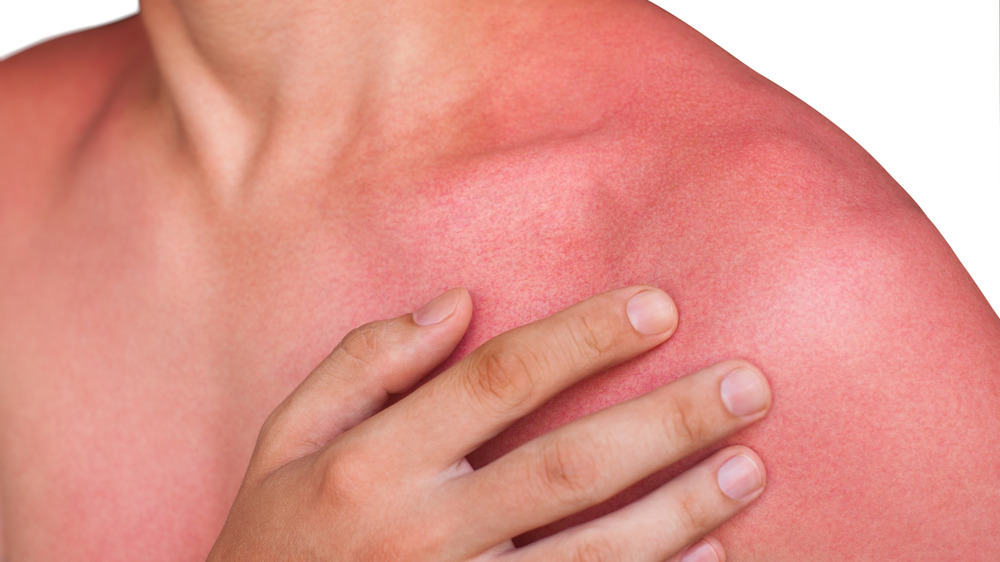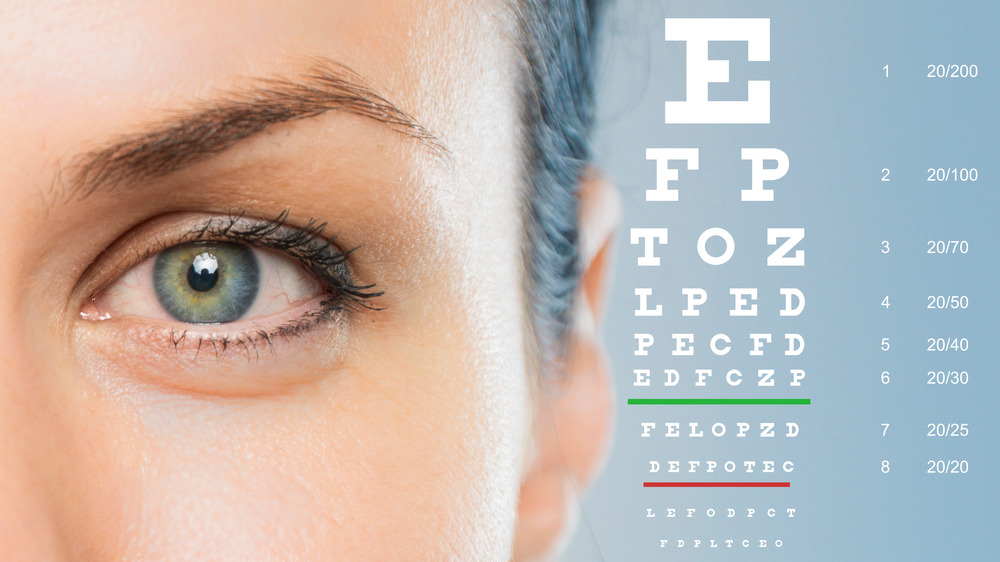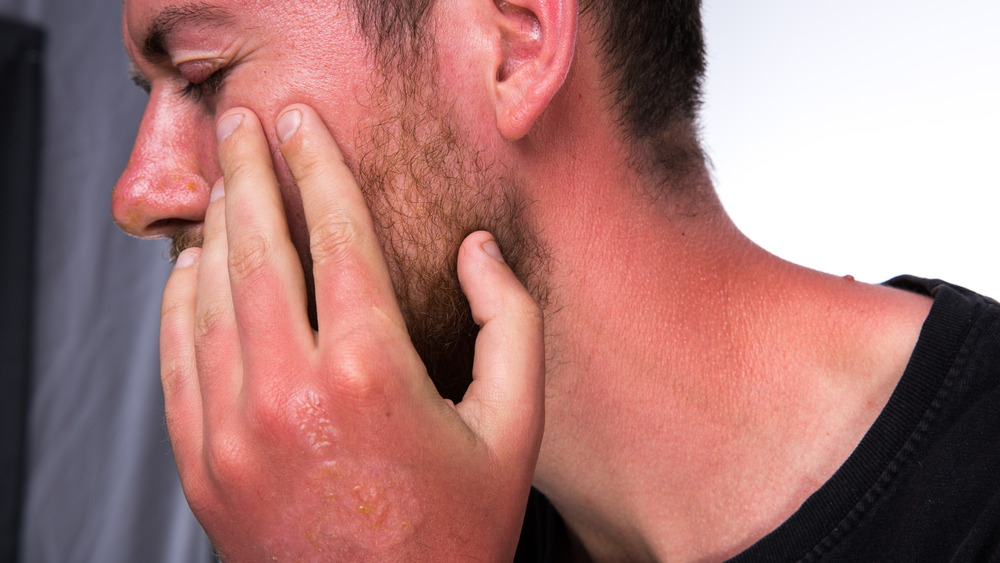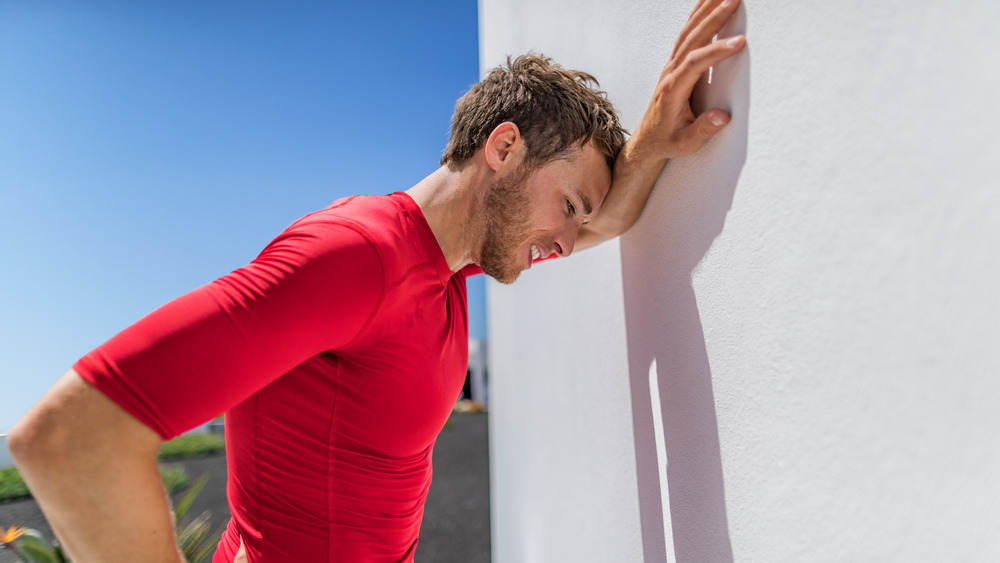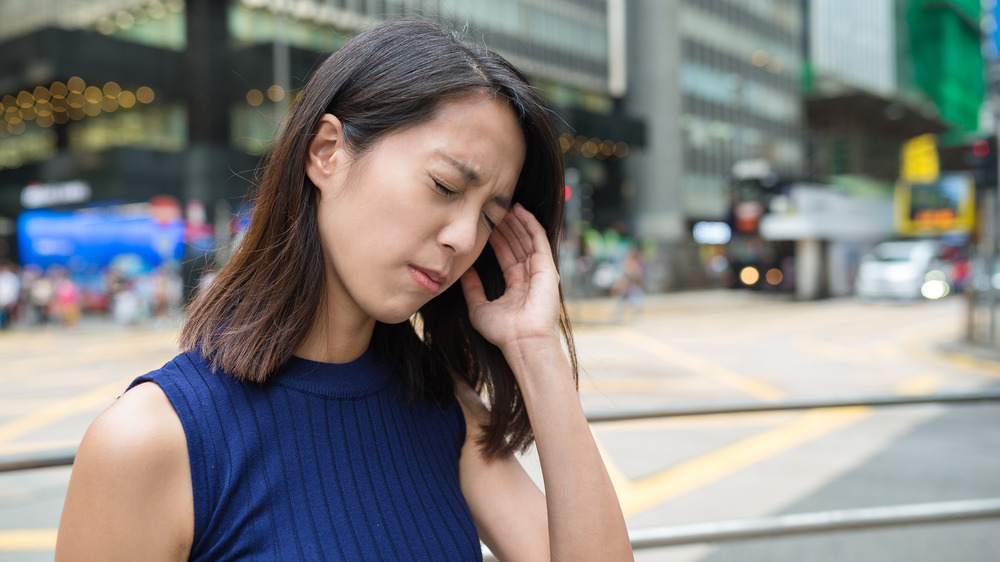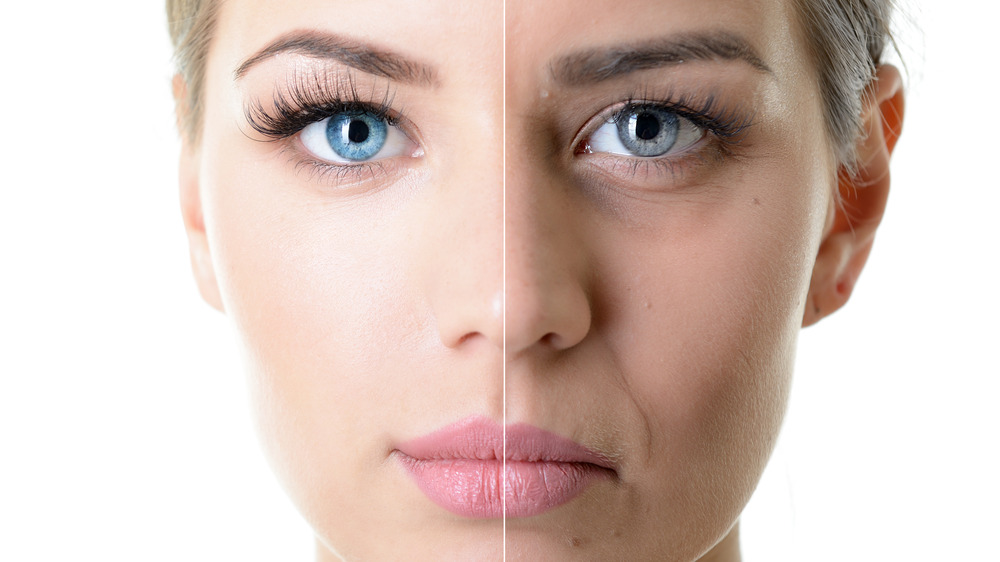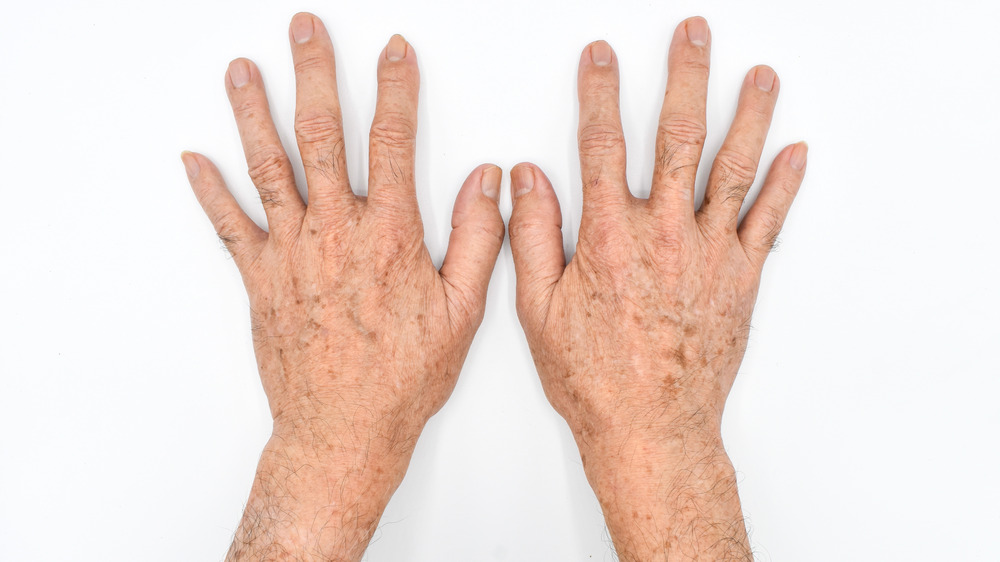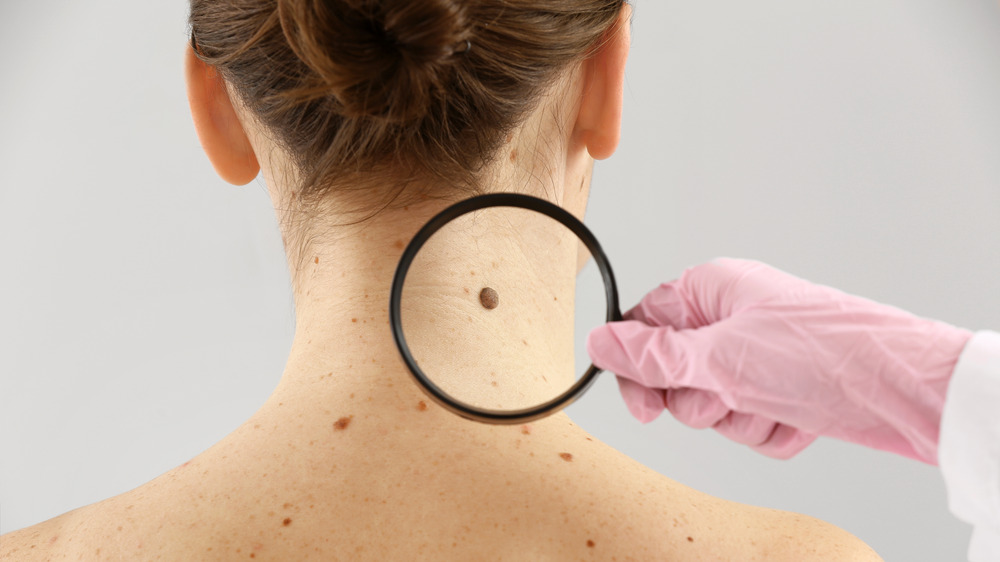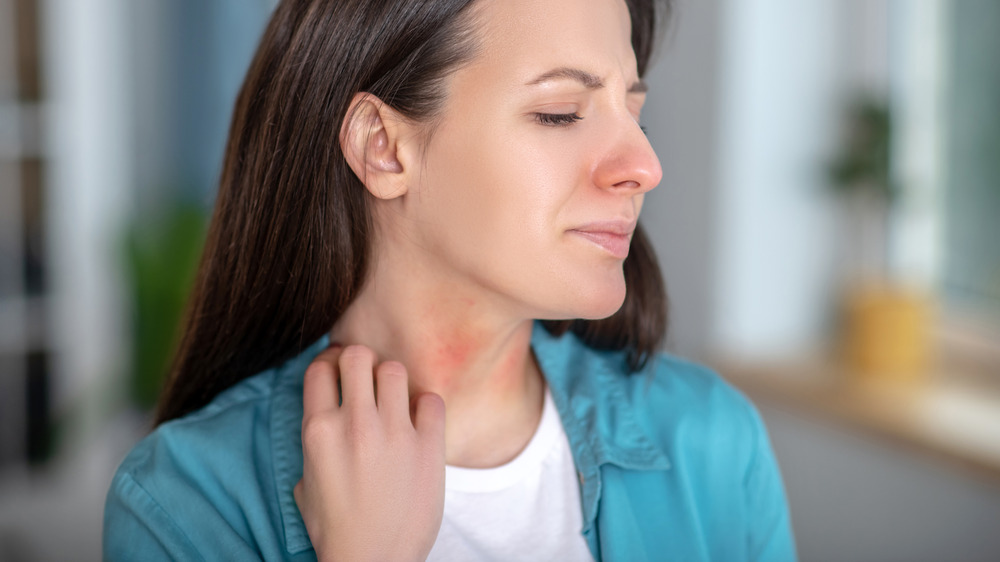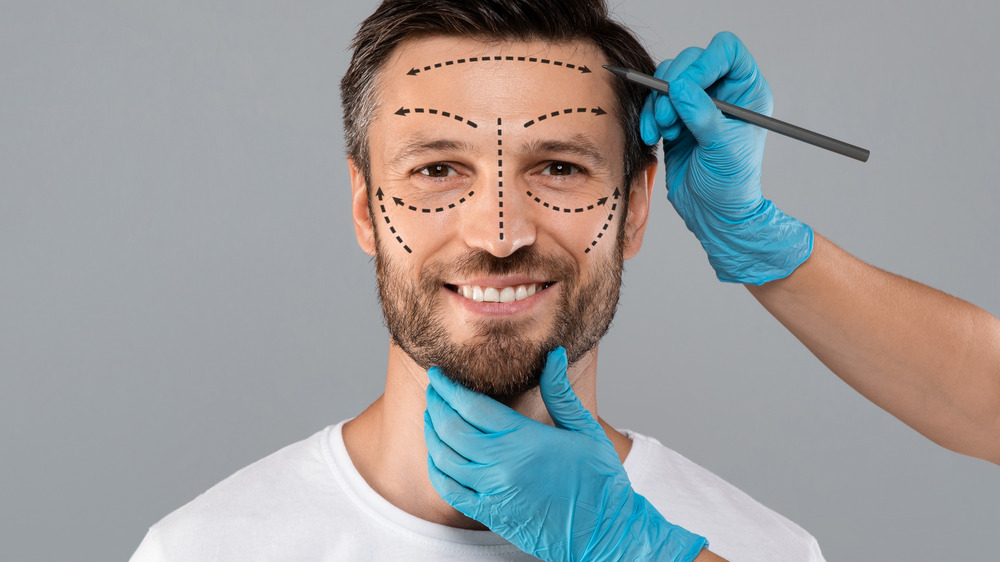If This Happens To You, You're Getting Too Much Sun
There's something uplifting about sunlight. Feeling sad? A walk in the fresh air on a sunny day can help raise your spirits. Want to relax? Lounge in a hammock or reclining lawn chair in the sunshine and watch how fast you'll drift off to sleep and wake up feeling refreshed. Yes, there's no doubt the sun can be very beneficial, but as the old saying goes, too much of a good thing can be bad, and when it comes to the sun, "bad" can mean a whole host of health problems.
Before we go any further, it's time for a little Sun 101. Being out in the sun helps your body produce vitamin D (via Johns Hopkins Medicine), and not having enough of this vitamin can lead to problems, ranging from hair loss to having brittle bones. But sunlight also has ultraviolet rays, and the two that can cause issues for humans are Ultraviolet A (UVA) and Ultraviolet B (UVB).
Beyond absorbing UV rays, just the heat from the sun can be problematic to one's health. And the symptoms of too much sun exposure are not always the obvious ones like sunburns and dehydration. In fact, those only scratch the surface.
Is it the flu or a sunburn?
This is probably the first thing that popped into your mind when you read "If this happens to you, you're getting too much sun." But sunburns are not something to shrug off as an inevitable part of going to the beach or being outdoors. And their symptoms are more than just the reddening of the skin.
According to WebMD, UV rays actually penetrate your skin and can affect your DNA. So, that surface redness and sometimes itchy burn is only the tip of the iceberg when it comes to sunburns and overexposure. In fact, as odd as it may sound, a sunburn can give you the chills and make you "feel like you have the flu."
Of course, sunscreen is a good defense against sunburns, but as WebMD recommends, you need to pick one that protects against both UVA and UVB rays. Remember, while the sun's intensity plays a role when it comes to sunburning, it's the UV rays that really do the main damage, which is why people can still get a sunburn even if they are in a nice cool pool or the ocean.
Blurry vision may mean your eyes are sunburned
Undoubtedly, you've seen ads for sunglasses that emphasize how they protect your eyes from harmful UV rays. And here's the reason why. Just like your skin, your eyes can get sunburned (via Healthline).
Eyes have a clear protective covering called the cornea, which can become inflamed (a.k.a. sunburned) as part of a condition known as ultraviolet keratitis or photokeratitis (via Healthline). As a result, you may experience issues like blurry vision, eye pain, headaches, and light sensitivity. And as Healthline explains, even a temporary sunburn can still do damage to other parts of your eyes, including your lenses and your retinas, the nervous tissue that connects your eyes to your brain (via Encyclopedia Britannica).
Unfortunately, the more your eyes get sunburned, the more likely you will develop severe health problems (via Healthline), including eyelid cancer, cataracts, and age-related macular degeneration where the type of vision you need for driving, for example, becomes less sharp (via the NIH's National Eye Institute). One more thing: If you wear contact lenses, the sooner you take them out of your sunburned eyes, the faster your eyes will start to heal (via Healthline).
Sun poisoning causes blisters
The phrase "sun poisoning" is a bit misleading. No, the sun can't literally poison you the same way arsenic or cyanide can (via WebMD). But that doesn't mean it can't hurt you.
According to WebMD, sun poisoning is a severe sunburn that goes beyond just the reddening of one's skin. In fact, you could develop blisters as a result of this level of sun exposure. Other symptoms may include fever, headaches, becoming faint, an upset stomach, swelling in the face, and becoming dehydrated.
While you're more likely to experience sun poisoning (and a less severe sunburn for that matter) if you have fair skin, the two main contributing factors for sun poisoning are not wearing sun protection like sunblock or a hat and staying out in the sun for a long period of time (via WebMD). Also, keep in mind that the sun's rays can reflect off and be magnified by sand and water like on a beach, as well as snow like on a ski slope. If you experience any of the symptoms of sun poisoning, seek medical help right away. And use cool, not cold compresses to soothe a sun poisoning burn.
Don't ignore cramps unless you want heatstroke
You've probably heard of having a heatstroke, but do you know what heat emergencies are? While many things could be called an emergency, this term refers to a specific type of health crisis that happens in three stages (via Healthline).
First, there are heat cramps, which can occur whether or not you've been doing physical activities like playing sports in the hot sun (via Healthline). If you ignore these cramps, you could enter the second stage of a heat emergency, heat exhaustion. At this point, you may be feeling nauseous and faint and may have a headache.
If you still try to ignore your symptoms, you risk experiencing the third stage of a heat emergency: heatstroke (via Healthline). At this point, your body's temperature could become dangerously high, exceeding even 104°F! Not surprisingly, you may start hallucinating and having seizures, and even if you survive (yes, heatstrokes can be fatal), you may suffer from health problems for the rest of your life. This is why it's important to get out of the sun and hydrate with water or a sports drink before you reach the final stage of a heat emergency.
That headache might mean you're dehydrated
Of course, if you're out in the sun too long, you'll begin sweating and then become thirsty. It makes perfect sense and frankly can happen even if you're in intense heat from the sun for a short time. And while there are things you can do if you sweat too much (like cutting back on spicy foods), the symptoms of dehydration can go well beyond that parched feeling in your mouth.
According to the Baylor College of Medicine, as the body sweats and in the process loses water and minerals called electrolytes, its blood vessels become more narrow. The result? You may experience a headache or even a migraine. And remember, a headache can be a symptom of heat exhaustion, which precedes a heatstroke (via Healthline).
Dr. Doris Kung, who is an assistant professor of neurology at Baylor, confirmed that dehydration can trigger both headaches and migraines and offers some advice on Baylor's website. "One way to try to prevent this type of headache is by drinking plenty of water when you are spending the day outside and taking a break from activity."
Brittle hair? Sunlight may be to blame
Is your hair unmanageable? Constantly breaking? The good news is it may have less to do with uncontrollable factors like genetics and more to do with sun exposure.
According to NIH, the sun's UVB rays cause the proteins in our hair shafts to degrade and be lost. Plus, the amino acids in our hair absorb the sun's radiation and produce unstable molecules called free radicals, which can also cause damage (via the National Cancer Institute). And, unfortunately, the lighter your hair color, the more likely the sun will damage your do (via Healthline).
If you're concerned about your hair and sun exposure, using hair products that protect against UV rays or simply wearing a hat can make a big difference (via Healthline). And to make existing damage more manageable, you may want to try the "soak-and-smear" method where you shampoo and condition your hair and then apply a leave-in conditioner followed by an oil. And speaking of washing your hair, you also may want to blot your hair dry with a towel rather than use a heat device like a blow dryer that zaps your hair's moisture.
UV light can cause wrinkles
If your parents had few wrinkles, then there's a good chance you inherited their skins' textures and structures and will also be basically wrinkle-free (via Mayo Clinic). However, this is not a guarantee. According to the Mayo Clinic, a big factor when it comes to wrinkles is exposure to the sun's UV radiation.
Yes, those pesky ultraviolet rays that not only cause sunburns when they penetrate your skin (via WebMD) also break down your skin's connective tissue (via Mayo Clinic). This makes your skin age faster, causing it to lose its flexibility, as well as its strength. The results? Your skin not only gets wrinkly but also saggy.
To avoid premature wrinkling, the Mayo Clinic recommends not only picking a sunscreen that blocks both UVA and UVB rays but also wearing it whenever you're going to be outdoors, regardless of what time of year it is. The Mayo Clinic also recommends protective clothing like wide-brimmed hats and long-sleeved shirts (remember, wrinkles aren't only on the face). And one more note: If you smoke, that can also increase your wrinkles.
Too much sun can cause liver spots
Although most people associate liver spots (a.k.a. age spots) with older adults, these dark patches aren't also called sunspots and solar lentigines for nothing (via Mayo Clinic). While we connect them with aging, they are actually a sign that someone has been out in the sun a great deal, and so can occur in people under 50.
Funny enough, liver spots are your body's way of trying to protect your skin from further damage from the sun's rays (via Mayo Clinic). And although we think of them on someone's hands, according to the Mayo Clinic, they can occur on the face, shoulders, upper back, arms, and even the tops of one's feet.
Unfortunately, liver spots do not fade but there are treatments for getting rid of them or at least lessening their appearance (via Mayo Clinic). And avoiding developing them in the first place is simple if you take basic precautions like using sunscreen and limiting your sun exposure. One final thing to keep in mind: even though liver spots are not in general dangerous, if they bleed or get larger, you may want to have them checked by a healthcare professional.
Is your skin like sandpaper? It Could be actinic keratosis
No one wants rough skin, but if you have raised, crusty patches of red scales or lesions and a sandpaper texture, you may be experiencing a condition from too much sun exposure called actinic keratosis (via Medical News Today). Also known as solar keratosis, this type of skin growth usually affects people over 40. According to Medical News Today, it most commonly appears on the face, the back of the hands and forearms, the shoulders, the neck, the ears, and the scalp.
Is actinic keratosis dangerous? As Medical News Today explains, it falls into the category of precancerous growths. So, no, it's not cancerous, but without proper monitoring and treatments when needed, it could develop into a type of skin cancer called squamous cell carcinoma.
While it takes years of overexposure to the sun to develop actinic keratosis, once you have it, you may experience new flare-ups for the rest of your life (via Medical News Today). If you think you have this skin condition, you should have it diagnosed by a healthcare professional who can discuss treatment options like surgery and medication.
Moles, skin cancer, and the sun
Is a mole always cancerous? No, but don't breathe a sigh of relief yet. Unfortunately, the most serious skin cancer, melanoma, doesn't always announce itself with a change to your skin's appearance (via Mayo Clinic).
First, as the Mayo Clinic notes, moles that are round, one color, have a clear border, and about the size of a pencil eraser are usually just normal moles. Moles that are an odd shape with irregular borders, that change in color, become larger, bleed, or itch may be cancerous. Furthermore, if a regular mole suddenly starts showing any of the above symptoms, it may be a dangerous sign and should be checked by a healthcare professional.
According to the Mayo Clinic, the sun's UV rays can increase your chances of developing skin cancer like melanoma, which is why it's important to keep up with your sun protection routine. And while a cancerous mole can mean you have melanoma, this dangerous form of skin cancer can also be present on what appears to be healthy skin. But if caught early enough, it is treatable, so it's crucial to not skip check-ups, especially if you develop a new mole.
Sunlight sensitivity can cause red, rough skin patches
Here's a mouthful for you: polymorphous light eruption. Sounds like something to do with a sci-fi volcano, but it's actually a skin rash that can happen if you are sensitive to sunlight (via Mayo Clinic). Besides possibly rough, red skin, this type of sensitivity can cause bumps and blisters, as well as burning and itching, on areas like the front of your arms and neck.
According to the Mayo Clinic, there're still some questions as to why people experience this photosensitivity to sunlight. However, from what we know, UV rays seem to be major culprits as to why some people have this particular bad reaction to the sun. And while anyone can experience this type of rash, it's more likely to happen to females, especially if they have a family history of it.
Not to worry, however, because there is some good news. As the Mayo Clinic explains, some people become less sensitive over time and eventually no longer experience polymorphous light eruptions. And even if you continue to experience rashes, they usually disappear without medication within 10 days and without leaving any scars.
Itchy? It Might be heat rash
You're out for a jog on a particularly hot day. When you return home and get ready to hop in the shower, you discover that your stomach has tiny, itchy bumps on it that definitely weren't there when you put on your workout shirt. Unluckily, your exercise plus the heat has given you a case of miliaria (via Medical News Today).
More commonly called a heat rash, a summer rash, or just plain prickly heat this type of rash happens when your sweat glands become blocked and can occur between folds of skin, as well as in situations where your clothing rubs against areas of your skin (via Medical News Today). Is it unpleasant? Yes, there is a reason they call it prickly heat after all. But it's more of a nuisance as long as it doesn't become infected.
If you develop a heat rash, use a cool compress to ease symptoms but only for "20 minutes at a time" (via Medical News Today). You may also want to change your clothes if you're wearing synthetic materials and put on something made of cotton. Finally, there are topical treatments to help with these rashes.
Can the sun make your nose bigger?
Okay, before you panic, not everyone's nose becomes larger because of sunlight. But if you're a man between 50 and 70 years old who has fair skin and a family history of the skin disease known as rosacea, you may be a candidate for rhinophyma (via Medical News Today).
Rhinophyma is a form of rosacea where one's nose becomes red and bulbous (via Medical News Today). Unfortunately, unlike other types of rosacea where the symptoms are temporary, a person's nose may continue to grow larger if they have rhinophyma. And since rosacea's symptoms can be worsened by the sun's rays (via Medical News Today), it's not surprising that avoiding too much sun is an important lifestyle change for dealing with rhinophyma (via Medical News Today).
Now, even if you're a man who has rosacea, don't become alarmed just yet. As long as you're properly treating your skin condition, you shouldn't develop rhinophyma (via Medical News Today). And if you do, there are medications and surgical treatments that can help. But if you haven't been to a healthcare professional about your rosacea in a while, it might be time to set up an appointment.
Sun exposure after a facelift can lead to scarring
They're judged, they're joked about, but make no mistake — facelifts are serious surgeries. And while they may be transformative for some, that transformation is not instant. As board-certified plastic surgeon, Dr. David Passaretti explains on his website, patients need to take precautions like limiting their sun exposure if they want their surgery to properly heal.
"The sun emits harmful UV rays that are known to cause sun burn and long-term damage," Dr. Passaretti states on his website, adding, "However, what many people do not know is that sun exposure can also interfere with healing and increase the risk of complications after a surgical procedure, such as a facelift." What kinds of complications? How about more noticeable scarring, new wrinkles, skin irritation, inflammation, and discoloration near the surgery's incision sites.
Beyond staying out of the sun for the first week after surgery, Dr. Passaretti recommends on his website that patients care for their facelifts in the long-term by protecting their skin from the sun's UV rays. His tips include using sunscreen every day, wearing wide-brimmed hats, and taking advantage of shady areas.

